By Evan Ackerman
Also at CPX yesterday I got to take a closer look at the BMW Hydrogen 7 and the Tesla Roadster. We saw them last year at the LA Auto Show, but CPX was casual and laid back and I got to talk with some of the actual engineers instead of PR drones (yay!).
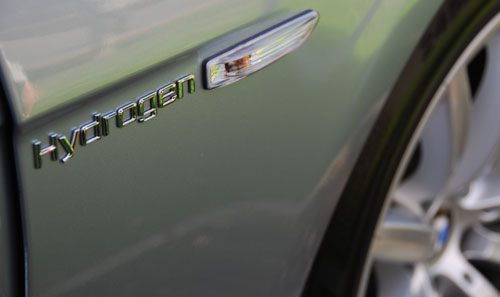
The awesome thing about the BMW Hydrogen 7 is that it’s a production ready car that can use either hydrogen or gasoline. And when I say either, I mean that if you’re driving along using conventional gas and feel like saving the environment for a little while, you just push a button and the car transitions seamlessly into using hydrogen combustion. 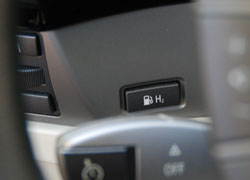 Unless you listen very, very carefully there is no way to tell that the car is using an entirely different fuel system. This means that you can get hydrogen when and where it’s available but not have to worry about being stranded due to lack of fuel.
Unless you listen very, very carefully there is no way to tell that the car is using an entirely different fuel system. This means that you can get hydrogen when and where it’s available but not have to worry about being stranded due to lack of fuel.
Unlike most hydrogen powered vehicles, the Hydrogen 7 uses liquid (as opposed to gaseous) hydrogen, stored in a big tank in the trunk that’s been insulated and cooled down to -418 degrees F. The advantage of this technique is that you can store more hydrogen in a smaller space at a much lower and safer pressure (about 40 psi as opposed to 10,000 psi in cars that use hydrogen gas); the disadvantage is that if you let the car sit, the tank heats up, the liquid hydrogen starts to vaporize, and you gradually lose fuel.
Fuel is of course the big problem in the whole hydrogen car equation. Hydrogen gas comes from two primary sources: natural gas, and electrolysis. Natural gas is not particularly eco-friendly, but electrolysis creates hydrogen from water using nothing but electricity, which we can get from all sorts of renewable sources. It just has to, you know, happen. The current cost of a kilo of hydrogen (equivalent in energy to a gallon of gas) is something like $12. That’s sounds like a lot, but I’m paying $3.95 a gallon out here in California for regular unleaded which sucks for the environment and is backed by a huge production infrastructure that hydrogen doesn’t have yet.
There are currently 20 Hydrogen 7s on the road in the US (out of 100 worldwide), and an additional 2 hydrogen only models. These cars are totally ready to go in that they’ve passed all of the necessary crash tests and stuff; the only thing that has to happen now is that hydrogen has to get cheap enough (or gas has to get expensive enough) that there’s a market for them.
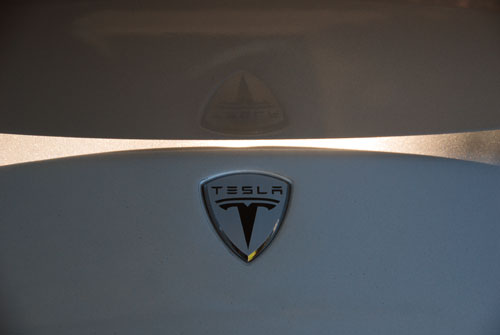
As for Tesla, they’re already producing the Roadster. There was some question a little while back as to what was going to happen with the transmission… The 2 speed transmissions originally designed for the car just couldn’t handle 150,000 miles worth of the massive amounts of torque output by the engine. Although the transmissions will have to be replaced, the first production cars are still shipping with the 2 speed transmission, while the final production cars will have a 1 speed transmission that is not yet off the drawing board. Believe it or not (and I didn’t at first), this won’t have a significant effect on the performance of the car. The engine will be retuned towards the low end, maintaining the sub 4 second 0-60 time, and since the top speed is electronically limited to 125, you won’t notice any difference there either. Interestingly, I was also told that the engine is physically capable of outputting something like double the power that it currently does. ‘Course, making that happen would certainly void the warranty and probably tear the car in half, but I’m confident that someone will figure out how to hack the Tesla Roadster and see just what it can do.
After the jump, I’m going to take a stab at making a gallery of pics of the Hydrogen 7 and Tesla roadster.
[ BMW Hydrogen 7 ]
[ Tesla Roadster ]

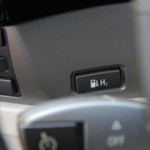
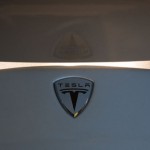
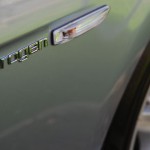
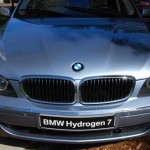
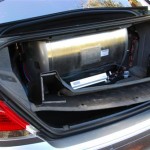
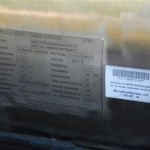
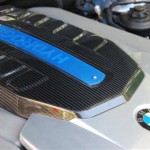
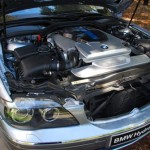
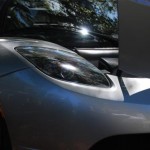
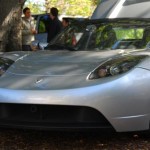




I really enjoyed this blog. where can I find more info about this. email me..
I just sent this post to a bunch of my friends as I agree with most of what you’re saying here and the way you’ve presented it is awesome.
_________________________
vehicle inspection uk